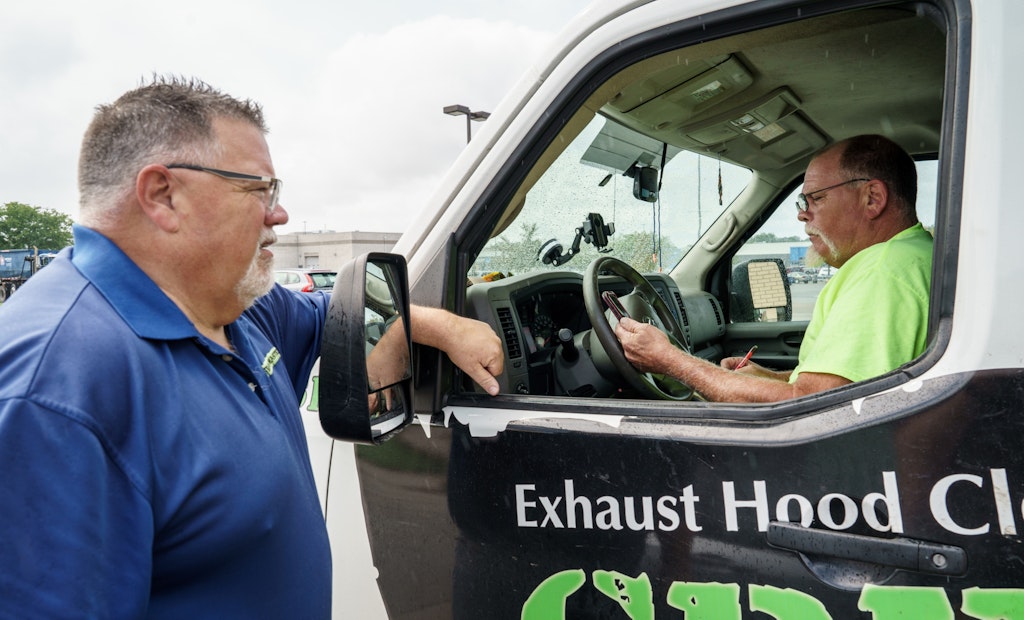Interested in Trucks?
Get Trucks articles, news and videos right in your inbox! Sign up now.
Trucks + Get AlertsIn a perfect world, a contractor would be able to see whenever company technicians engage in risky driving behaviors, then coach them to encourage safer driving habits — saving the company money in the process.
At Grease Masters, based in suburban St. Louis, co-owner John Remstedt can do just that, courtesy of GPS service provided by Lytx. The system includes rear-facing cameras that monitor technicians’ driving and front-facing cameras that capture what’s going on around the service vehicle, all in near real-time.
Grease Masters switched to Lytx for GPS service in 2020, mainly because of the dashcam capability.
“Some technicians were having accidents and other things were going on,” he says. “Guys were telling us they weren’t on their phones when they had accidents … and now we can prove whether they’re telling the truth or not.
“It already has saved us from four insurance claims because the camera video showed that people hit our guys, not vice versa,” Remstedt says. “It also helps with potential theft — we once found a stolen truck before the police could find it — and we get a little price break on vehicle insurance for using the technology, too.”
Lytx features light and audio alarms that notify drivers when risky behaviors occur (though its functionality can be limited under certain driving conditions); immediate, on-demand access to videos; up to 400 hours of continuous recording capability; metrics reporting that enables analysis of driving performance and trends that can help improve fleet safety and efficiency; remote coaching when face-to-face meetings aren’t feasible; and advanced machine vision and artificial intelligence technologies that capture and categorize risky driving behaviors, while respecting drivers’ privacy.
The system pays for itself through more efficient dispatching. It also improves customer service because dispatchers quickly determine which technicians are best positioned to respond to emergency calls, Remstedt says.
“We have a 75-inch monitor in the office where each truck is visible on a map. And if, say, an interstate closes down, we can quickly reroute our technicians to save time. That provides a huge return on investment, too.”
Was there any pushback from technicians when the company installed the cameras?
“A little bit, but they got over it pretty quick,” Remstedt says. “Nowadays just about anywhere you work, you’re going to have something like this on a truck. And if you’re not doing anything wrong, you don’t have anything to worry about.”






